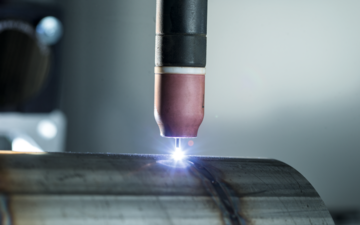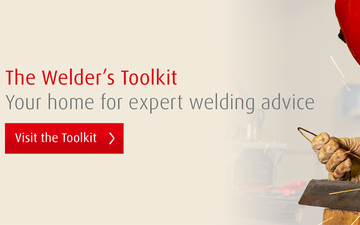- Official BOC UK Online | Industrial Gases | Products & Solutions | BOConline UK
-
Shop
- Industries
- Processes
- Gases & Equipment
-
Solutions
-
Services
-
Health & Safety
-
Contact & Support
- What's Happening
-
Net Zero Strategies
What to Look for in Your TIG Torch
Posted by BOC

If you’re TIG welding, there’s a good chance you’re working on a high-quality job. TIG forms a highly concentrated, deeply penetrating arc, which gives excellent weld quality with minimal defects. This makes the process highly suitable for high quality welds in materials like stainless steel and aluminium alloys.
In this blog we cover the TIG torch basics to help you choose the right torch for your next weld.
How does TIG welding work?
TIG welding is an arc welding process in which a high intensity arc is generated between a non-consumable tungsten electrode and the parent material.
Where the arc makes contact with your workpiece, the parent material melts and fuses to form a welded joint, in the majority of cases a filler wire is added manually to the molten weld pool. Shielding gas is fed through the torch to protect the weldpool, adjacent material, the tungsten electrode and the filler wire.
Types of TIG torches
TIG torches come in a range of sizes and configurations and are normally categorised by the cooling method they use – either gas or water-cooled.
Gas-cooled torches are the most common. They’re generally larger and can be used for welding currents up to around 300 amps.
Water-cooled torches dissipate heat more quickly than air-cooled versions and are typically used in applications that use high welding currents, such as for thick section aluminium components. These torches are generally smaller and easier to manipulate.
Consideration should be given to the torch head configuration – it’s vital to have a good view of your weld joint and torches that are too big or cumbersome can make it harder to see and can lead to more defects.
Torches with flexible necks, swivel heads, straight heads, or even ‘pencil’ torches have their uses in different applications, and where access is difficult or limited.
Choosing the right TIG torch
When choosing your TIG torch there are several factors to take into account – the most important are:
- the maximum welding current to be used
- the likely duty cycle
- the material to be welded
- accessibility
- is the welding machine foot control or trigger operated?
- is the “standard” gas diffuser adequate or would the better gas coverage produced by a gas lens be beneficial?
- always use the biggest possible diameter ceramic to ensure best possible shielding gas protection
- whether it will be used by a welder, or in an automatic operation.
The reason this is important is because there’s a risk of damaging the torch through overheating if the duty cycle is exceeded. Higher welding currents require heavier welding cables and larger copper components to conduct the higher currents.
For applications that are likely to be operating at a higher duty cycle, your torch should have a higher current rating, or it could be worth upgrading to a water-cooled torch. It’s also a good idea to use a short cable length as possible, as longer trailing cables have a greater chance of being damaged.
Getting started: tips to maintain your torch and operate it safely
Apart from regular maintenance to keep your torch clean and free of damage, there are some specific areas that must be checked regularly:
- TIG torches, leads and connections can be prone to damage due to their length and multiple connections. Before use, all areas should be closely inspected
- your nozzle should be kept clear of contaminants
- any gas lenses should be clear of spatter and other damage
- collet bodies and collets (which supply electricity to the electrode) should be regularly checked – they can distort easily when hot, so they should be handled and stored with care
- your torch insulation must be whole and intact and your back caps free from cracks and chips
- and your trigger switch (if used) should be firmly fixed, and your two trigger leads insulated.
Remember, if you’re welding, always make sure you’re wearing the correct PPE for the job and be careful to avoid burns from equipment that remains hot after you’ve finished.
Check out BOC's huge range of TIG torches and accessories available to buy online.
And if you need advice or support when choosing your next welding torch, talk to your local Gas & Gear team.

